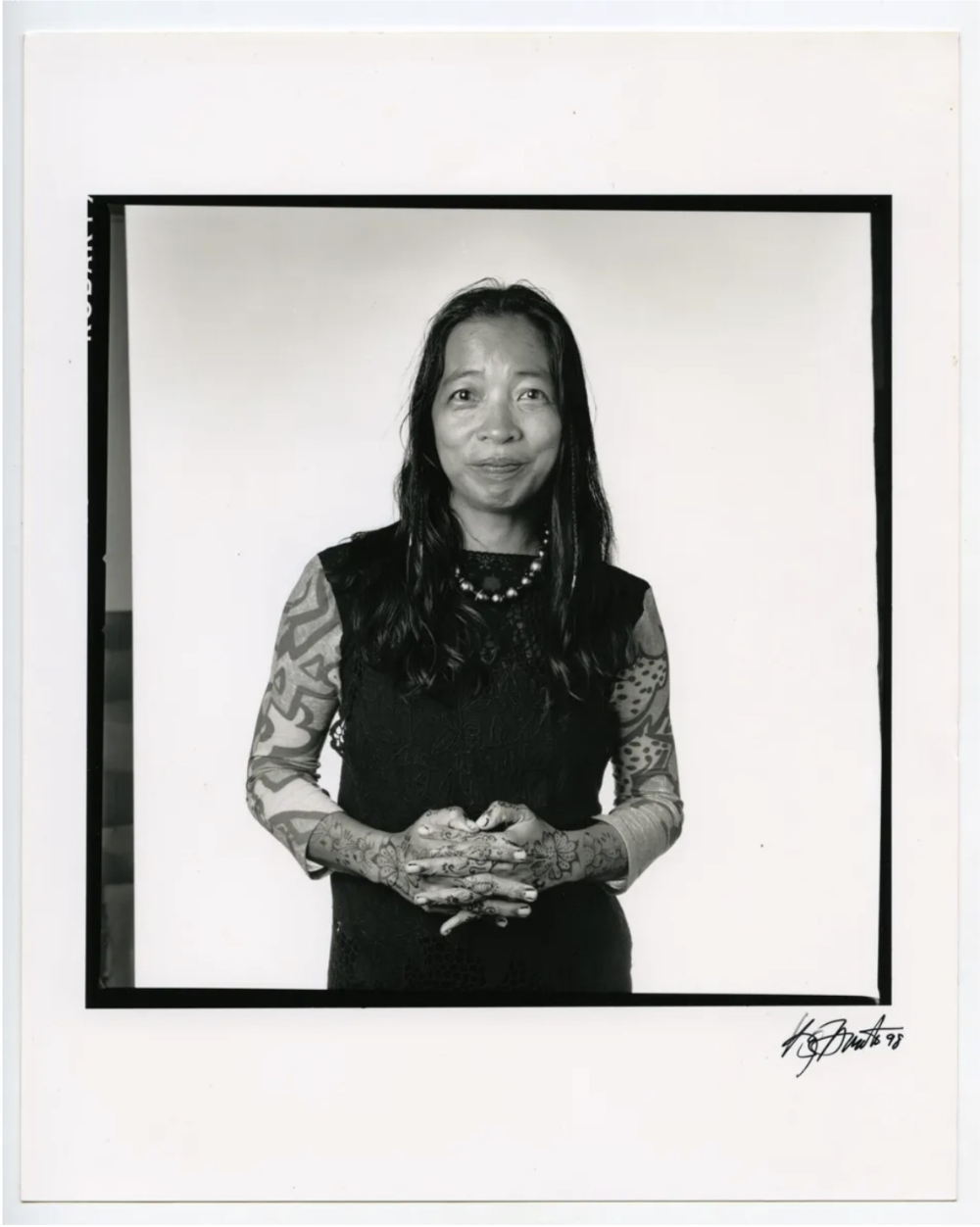Overlooked During Her Lifetime, Filipino American Artist Pacita Abad Has Suddenly Become a Global Star
Photo courtesy of Pacita Abad, 1988
Pacita Abad (1946-2004) was a Philippine-born artist and a revolutionary who, despite her profound contributions, was largely overlooked during her lifetime. It was posthumously revealed that she endured over 100 rejections in her relentless pursuit to be featured in museums and galleries. Abad’s signature format was trapunto, a style of large-scale quilt that imbued her work with playful textures and vibrant colors, often standing in stark contrast to its profound subject matter. As Vogue aptly noted, Abad tackled "dense, complicated intersectionalities, from her identity as an immigrant Ivatan woman in the Western world to the social and political tensions of the authoritarian Marcos regime in the Philippines." To me, she was a hopeful futurist, a visionary commentator on the world’s possibilities.
One of her standout pieces, "L.A. Liberty," features a brown Statue of Liberty, suggesting that we can champion our own freedoms while embracing the warmth, togetherness, and whimsical mix of textures and colors inherent in her trapunto style. This piece, like much of her work, embodies the punk-rock spirit of the artist herself, challenging us to envision freedom through a vibrant and inclusive lens.
Twenty years after her death, Pacita is finally garnering the attention of art collectors and museums. She is currently featured in a traveling show that is now at New York's PS1. As I stood before her work, I couldn't help but reflect on how Filipino artists have often been overlooked and underrepresented on the global stage. Yet, with the renewed interest in Pacita Abad's art, there seems to be a promising shift. Her vibrant, powerful narratives are finally getting the recognition they deserve, suggesting a hopeful future for Filipino art. It's an exciting moment, hinting at a broader appreciation and a spotlight on the rich talents that have long been waiting in the wings.
For more on Pacita, please see the article in Vogue.
Kita Kits,
Nicole
NEW YORK
Pacita Abad, L.A. Liberty, 1992. Acrylic, cotton yarn, plastic buttons, mirrors, gold thread, painted cloth on stitched and padded canvas. Collection Walker Art Center, Minneapolis; T.B. Walker Acquisition Fund, 2022. Courtesy Pacita Abad Art Estate and Spike Island, Bristol. photo: Max McClure
This spring, MoMA PS1 presents the first retrospective of artist Pacita Abad (Filipina-American, 1946–2004). Spanning the artist’s 32-year career, the exhibition includes more than 50 works — most of which have never been on public view in the United States prior to this exhibition. Largely self-taught, Abad is best known for her trapuntos, quilted paintings made by stitching and stuffing her canvases as opposed to stretching them over a wood frame. After moving to the United States in 1970 to escape political persecution from the authoritarian Marcos regime, Abad sought to give visibility to political refugees and oppressed peoples through her work. “I have always believed that an artist has a special obligation to remind society of its social responsibility,” she said. Organized by the Walker Art Center in collaboration with Abad’s estate, the presentation celebrates the multifaceted work of an artist whose vibrant visual, material, and conceptual concerns push forward salient conversations around globalization, power, and resilience.
The exhibition is accompanied by the first major publication on Abad’s work, produced by the Walker. The volume is edited with text by Victoria Sung and includes contributions from Julia Bryan-Wilson, Nancy Lim, Ruba Katrib, Xiaoyu Weng, and Matthew Villar Miranda, as well as a comprehensive oral history by Pio Abad and Sung.
PACITA ABAD on exhibition at MOMA PS1 April 20204 until September 2024.
MIAMI
Ube Tahini Brownies
Try James Beard Winner Abi Balingit’s recipe!




